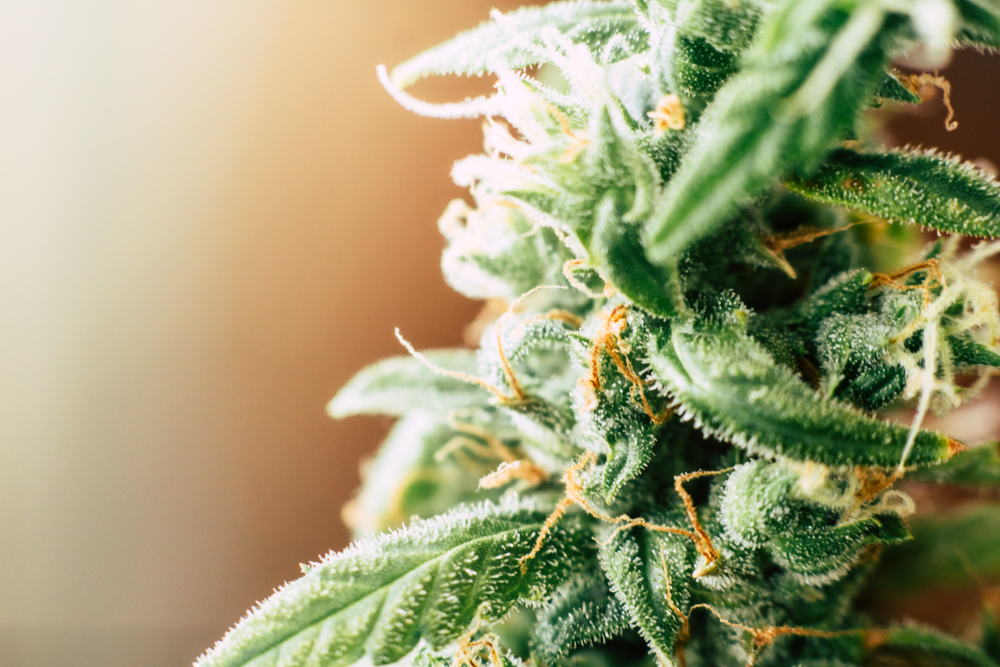CBD is short for cannabidiol, a naturally occurring cannabinoid found in the cannabis plant. Unlike THC, another popular cannabinoid found in cannabis, CBD is not psychoactive and will, therefore, cause no mind alterations, heightened senses, or the “high” phenomena.
Instead, CBD’s power is hidden in its potential to provide mental and physical benefits to consumers, without the risk of causing paranoia, excessive laughter of lack of motivation to even move.

Discovered in 1940, CBD has become a popular natural remedy and a preferred alternative to standard medicine for the treatment of a range of diseases or health conditions.
Along with other cannabinoids, CBD takes up 40% of the extract collected from the cannabis plant. Its presence is active in both marijuana and hemp, with the difference being that the marijuana flower contains high doses of THC, whereas hemp contains little to no THC.

How does CBD influence the body?
Its communicates with the body through the endocannabinoid system or the CB1 and CB2 receptors. These receptors can be found in a range of different areas across the body, including the central nervous system, peripheral, and the brain.
The endocannabinoid system is responsible for the regulation of a range of physiological triggers of the body. Thanks to the system, humans experience pain, memory, appetite, and mood.
CB1 and CB2 receptors have their own unique purpose in the endocannabinoid system. While CB1 receptors are predominantly discovered in the brain and spinal cord, CB2 receptors are predominantly positioned in the immune system, with their focus being the spleen and the gastrointestinal system.
Also Read: How To Consume CBD Oil ?
CB2 receptors are actively involved in controlling our appetite, immune system, and are responsible for functions such as inflammation and pain control.

CB1 receptors can have different locations, such as the lungs, liver, and kidneys, and can be involved in managing depression, nausea, and pain.
By entering the body, CBD establishes contact with these receptors and can trigger certain responses in the body, providing relief to a range of discomforts or conditions.
We can visualize the process by depicting CBD rushing through your body in search of receptors. Once they have arrived at the right destination (a suitable receptor), CBD compounds click with the receptor and the information is sent throughout the rest of the body.
Where does Cannabidiol come from?
We already mentioned that it comes from the cannabis plant, but how?
The process of obtaining CBD out of the cannabis plant is fascinating and may be both easy and complicated. In history, when technology was not so advanced, people have used basic extraction methods to take out the valuable cannabidiol from the plants.
However, today’s technological evolution has given better alternatives for extraction. One of the most difficult parts of cannabidiol extraction, for instance, is its separation from THC and other cannabinoids found in cannabis, which requires professional equipment and some specific know-how.
Most cannabis extraction methods involve the use of solvents such as liquids, CO2 or oil. The different extraction processes used will result in different levels of concentration and ultimately – different strength of the product.
CBD’s health benefits
It is extremely popular for its health benefits and its capability of helping with the prevention of certain conditions.
The compound is a powerful anti-inflammatory agent that can reduce chronic inflammation, multiple sclerosis, or fibromyalgia. It also carrier valuable characteristics of a pain reliever and is actively used for patients suffering from chronic pain or severe pain.
CBD is also successful in treating dementia or diseases such as Parkinson’s disease and Alzheimer’s disease. The compound acts as a neuroprotector and can protect the brain’s nerve cells from damage or aging, making it a preferred alternative for patients with neurological disorders or epilepsy.
Cannabidiol is even influential in supporting the treatment of cancer as it can block cancer cells from spreading through the body. Limiting the growth of cancer cells, it can help the body kill and get rid of these harmful cells.
How can CBD be used?
There are almost no barriers to the ways that CBD can be consumed. Although the most popular way of consumption is through CBD oil, a product officially sold on the market in countries, where the cannabinoid has been legalized, it can also be consumed through CBD edibles, CBD tinctures, CBD topicals and beauty products.
It can also be vaped or includes in your morning fruit smoothie. If you are interested in trying CBD, check out our ultimate cannabidiol online buying guide.
You can use your imagination and take a look at completely different product to discover your favorite approach of getting some CBD in your system.
CBD is safe to consume
CBD research reveals that the compound is safe to use and in fact, there is no risk of overdosing on the compound. There may be slight side effects possible from consuming too much of the cannabinoid, but the side effects cannot seriously damage our health.
For instance, having too much cannabidiol over a course of time can result in slight side effects such as dry mouth, dizziness, sweating, or lightheartedness.
Of course, to get the most of the valuable compound it is essential to carefully plan your intake and consult yourself with a professional with a legitimate background in the field. It is also important to consider any other medication that you may be taking and check how it can affect your consumption of CBD.

